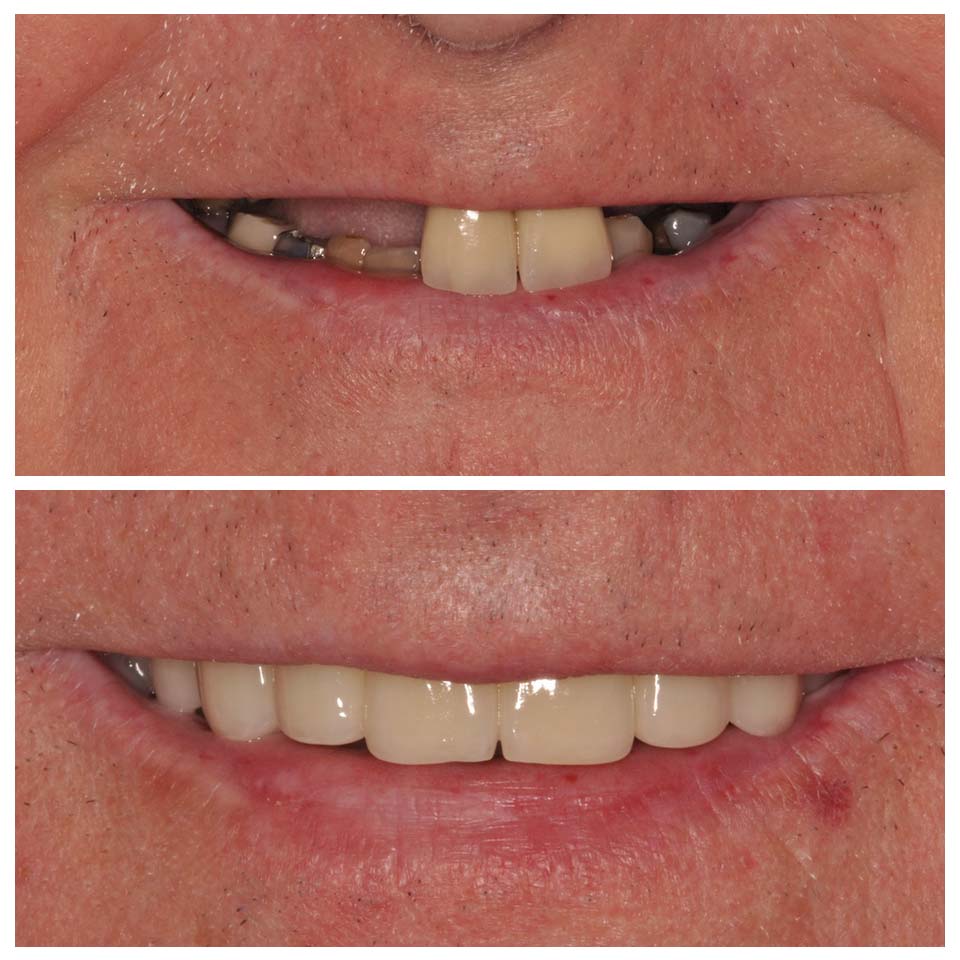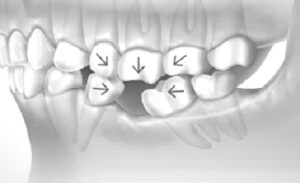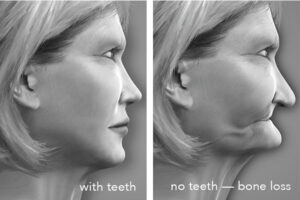
When faced with the need to replace a missing teeth, you may think to yourself: why do I even need to replace my missing tooth? The lost tooth may have left a gap that isn’t visible in the smile, or after a few days you may have got used to eating and chewing with the gap, so why should you still seek a tooth replacement option?
1. Tooth migration

This is a term used to describe the movement of the teeth next to to the space created by the missing tooth into the gap itself. There are different types of tooth migration depending on the direction of the teeth into the gap, the first one being Horizontal tooth migration (as seen above) in this case the neighbouring teeth are moving sideways into the gap. This happens as a result of the teeth no longer having anything to support on. The teeth therefore have a tendency to move until they find a tooth nearby to contact, hence the term horizontal tooth migration. As the teeth next to the gap move sideways and ‘migrate’ a change happens in the bite, This is because your bite is decided by how your top and bottom teeth meet and interlock. When teeth begin to move it affects the way your bottom and top teeth meet causing an irregular bite which can lead to problems such as a painful jaw joint, chipped teeth and headaches. For this reason it’s really important for teeth to be stable in their position and not free to move and migrate.
Another type of tooth migration is vertical tooth migration. This is when a tooth on top of a gap left behind due to a lost tooth begins to drift up or down to fill the space on top of it. This is a particularly disruptive type of tooth movement as it can begin to irritate the gum on top of the tooth causing ulcers and irritation.
2. Bone loss
One of the most significant impacts of missing teeth is bone loss. There’s a well known saying ‘ if you don’t use it, you lose it ‘ and the same goes for the bone surrounding teeth. When teeth are lost a signal is sent to the bone that previously supported and surrounded the teeth letting it know it’s no longer needed. The result of this is the shrinkage of bone in the area causing it to shrink and move downwards in the bottom jaw and upwards in the top jaw. In a patient lacking all of their teeth this can have a particularly significant impact on the following aesthetic features of the face:

3. Lip support
When bone is lost due to missing teeth in a patient that’s lost a full set of teeth the lips no longer have adequate support which is usually provided by the jawbones and teeth. This causes the lips to collapse inwards which can affect speech, nutrition and the overall aesthetic appearance of the individual making them look significantly older than their actual age.
4. Lower facial third height
The face can be split into three thirds (top, middle and lower) which should be roughly equal in height in a healthy person. When teeth are lost and bone loss occurs the height of the lower third of the face decreases which causes the person to look significantly older than their actual age. This can significantly affect confidence and self esteem as bone structure especially in the lower third of the face has a significant impact of facial aesthetics.
5. Malnutrition
Studies show that tooth loss, especially after losing a full set of teeth can lead to malnutrition mainly as a result of patients not being able to chew as efficiently. The chewing process is essential in breaking down food and digesting food to acquire nutrients such as protein, vitamins and minerals. As a result of this – losing teeth and not replacing them with a dental implant can have a direct effect on how effectively you can supply nutrients to your body and the longevity of your live. Yes – it really is as significant as that.
Enquire Now